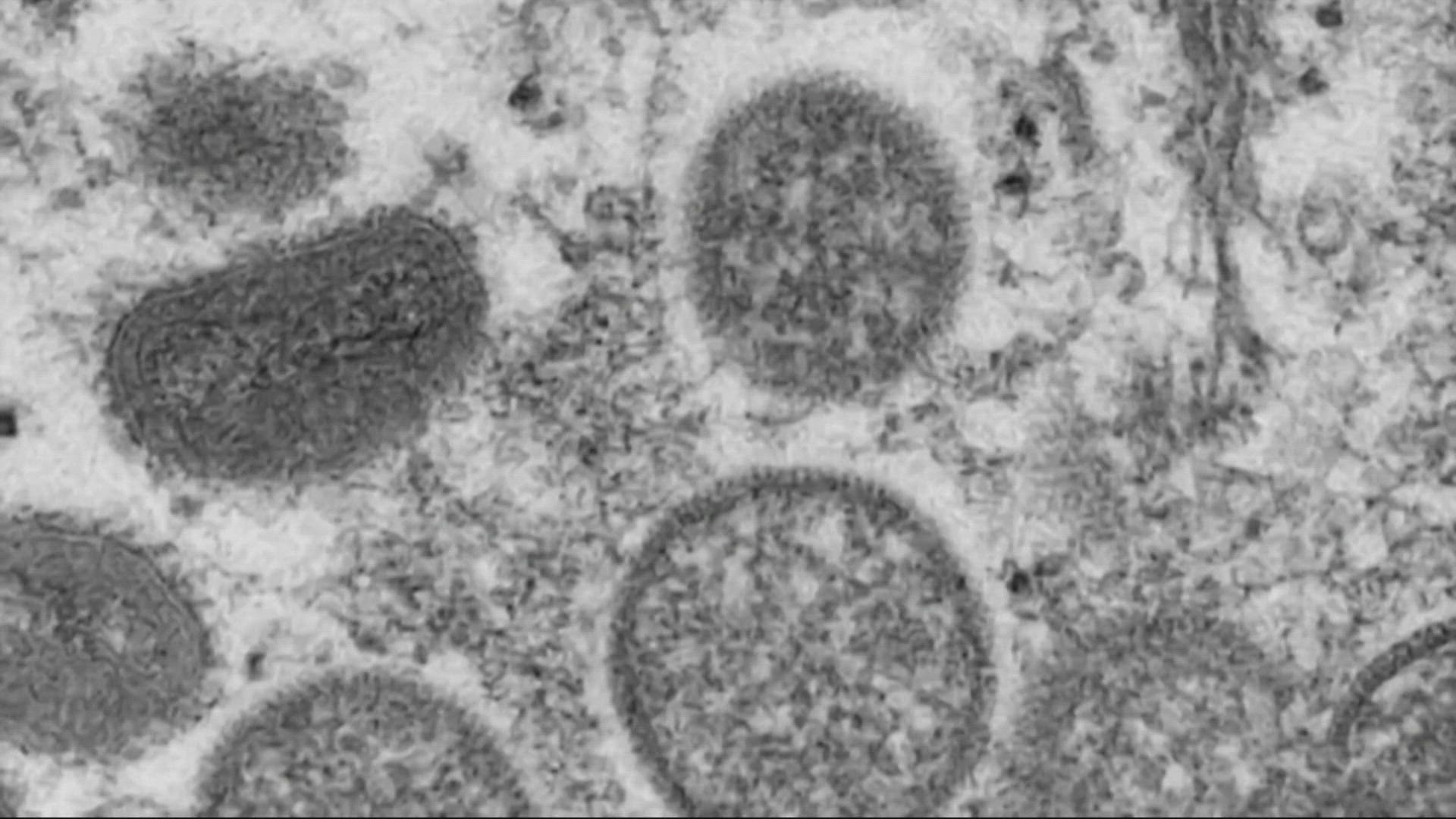PORTLAND, Ore. — Health officials say they've identified Oregon's first pediatric case of monkeypox. The case is linked to an adult infection that was confirmed last month, according to the Oregon Health Authority.
"We have a known connection to a previously diagnosed case," state health officer and epidemiologist Dr. Dean Sidelinger said in a statement. "This child did not get the virus at school, child care or another community setting."
The child was tested for the virus on Aug. 11 and the results were reported to public health officials on Aug. 15. Oregon has been conducting a case investigation and contact tracing to determine if there have been any other exposures.
No other information about the patient is being released in order to protect patient confidentiality, the state said.
Oregon has logged 116 confirmed or presumptive cases of monkeypox to date, of which 112 were in men and four were in women. Nationwide, there have been about 12,700 cases, and about 38,000 worldwide.
More than half of the Oregon cases have been in Multnomah County, with several more in Lane and Washington counties and a few in Clackamas, Columbia, Marion and Coos counties.
The pediatric case is one of just handful of monkeypox infections in children nationwide. U.S. Health officials announced the first two such cases last month, and said the children likely caught the virus through household transmission.
News of the pediatric infection in Oregon comes as parents are getting ready to send their kids back to school in a couple weeks, but Sidelinger said the risk of transmission in schools is very low.
"Monkeypox is not COVID-19," he said. "This virus is not easily spread unless you have that prolonged, close, skin-to-skin contact with an infected person."
Monkeypox symptoms can sometimes include fever, swollen lymph nodes, chills, headache, muscle aches and fatigue, according to OHA, but the universal symptom is a rash or sores that can affect the face, arms, legs and torso as well as the genitals and anus.
The rash can initially look like a pimple with an area of red skin underneath. The pimples can eventually get larger and fill with flued. They then typically scab over, and will heal in two to four weeks.
The most common means of person-to-person transmission is direct contact with the rash, scabs or bodily fluids of an infected person, health officials said. The vast majority of cases so far have been among men who have sex with men.
Anyone who tests positive or is awaiting test results is urged to isolate at home and take precautions to avoid the risk of infecting other household members.

